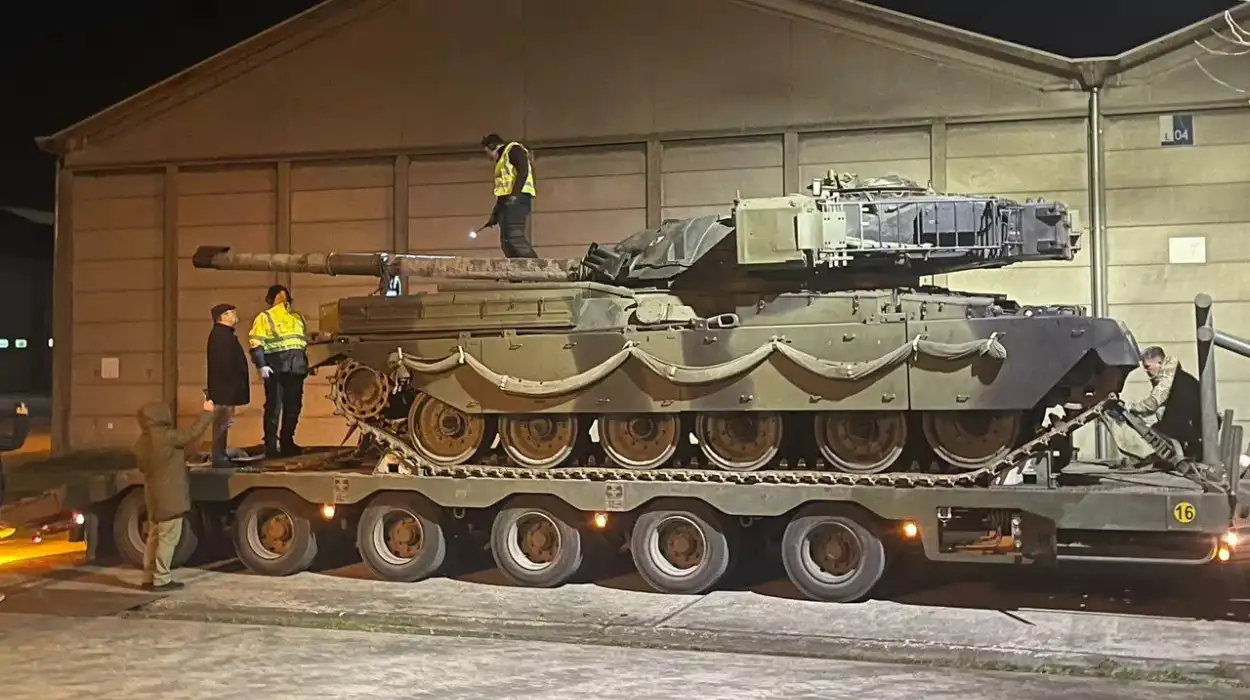Ypres (Brussels Morning Newspaper) – The War Heritage Institute, represented by Leon Symoens, moves large vehicles like the 3.7-meter-wide Chieftain tank at night to avoid traffic. A 64-ton British Conqueror tank will also be added to their museum collection.
According to Leon Symoens from the War Heritage Institute, Moving a big vehicle like the Chieftain tank is very difficult, especially on a dual carriageway. Leon Symoens says some rules say this kind of transport can only happen between 9 p.m. and 6 a.m. This is to keep traffic flowing and ensure safety.
The institute tries to avoid moving such large vehicles when they can because it needs a lot of planning, teamwork, and special tools. But when they have to move it, they must follow these strict rules and take all the necessary safety steps.
Leon Symoens says:
“We try to avoid this type of transport as much as possible. But if it has to be done, we have no choice.”
What is the historical significance of the Chieftain tank?
The Chieftain tank is 3.7 meters wide and is the largest item in the War Heritage Institute’s collection. According to officials, this will change soon because even bigger military vehicles are coming. One of these is the British Conqueror tank, which weighs 64 tons and was made for the British Army during the Cold War.
They mentioned that moving these large tanks depends more on their width and height than their weight. Leon Symoens says that transporting them needs careful planning and strict rules. The exact details for moving the Conqueror are still being worked out.
“For example, there will be a 64-ton British Conqueror tank. But it is not yet certain whether special transport will be required for that. It is not so much the tonnage that makes a difference, but the width and height of the vehicle,”
Says Symoens.
A new museum will open in Ypres in 2030, and it will have a growing collection of military vehicles. The museum will display nearly 300 vehicles. Visitors will see tanks, armoured personnel carriers, and other military machines.
According to officials, the exhibition will show how these vehicles have changed over time. With this big collection, the museum wants to be an important place for military history and attract visitors who are interested in these machines.
They stated that the Chieftain Tank was one of the finest heavy tanks of the Cold War period. It was manufactured in the late 1960s and remained in service until the late 1990s. The British Army depended on it for their armoured troops. The Chieftain was known for its strong firepower and protection.
Franky Bostyn mentioned that it was better than many tanks of its time, like the Leopard 1. This tank focused on being strong rather than fast. Its design helped shape future British battle tanks.
Franky Bostyn said.
“The tank was developed in the late 1960s and used until the late 1990s. For the British Army, it was the forerunner of the current Challenger tank.”



